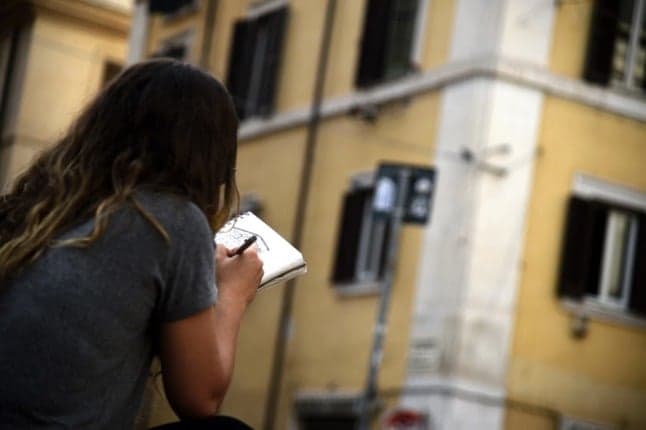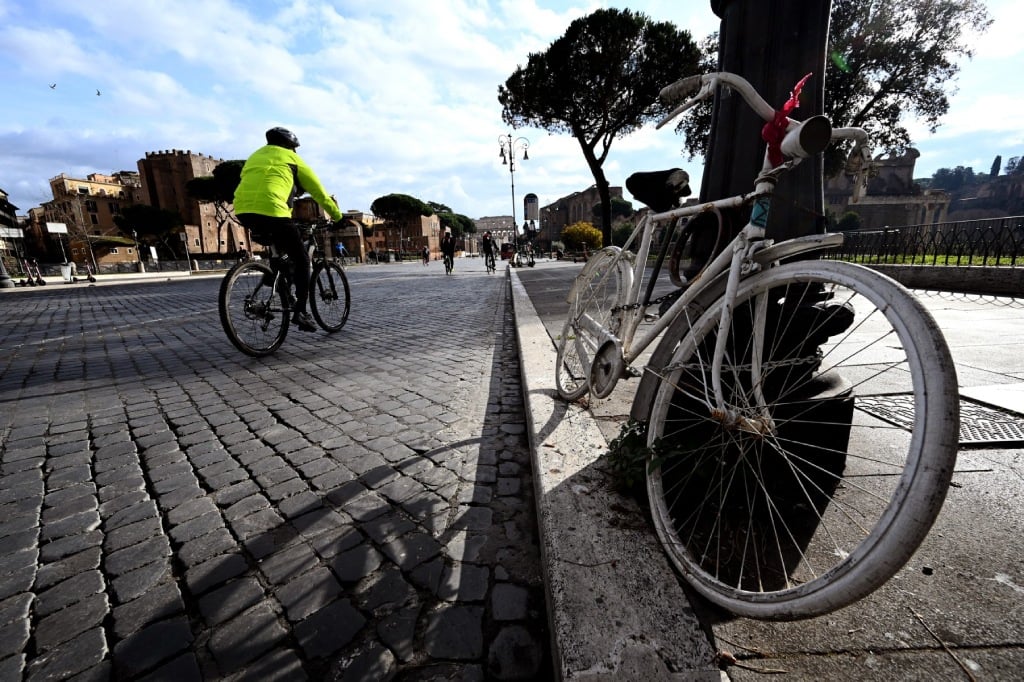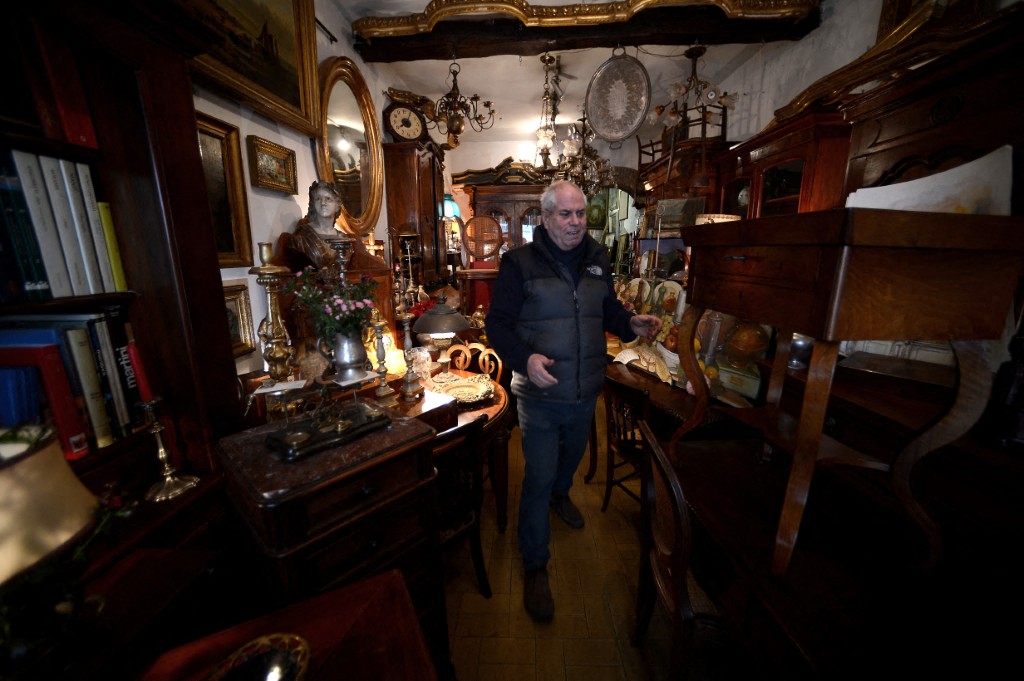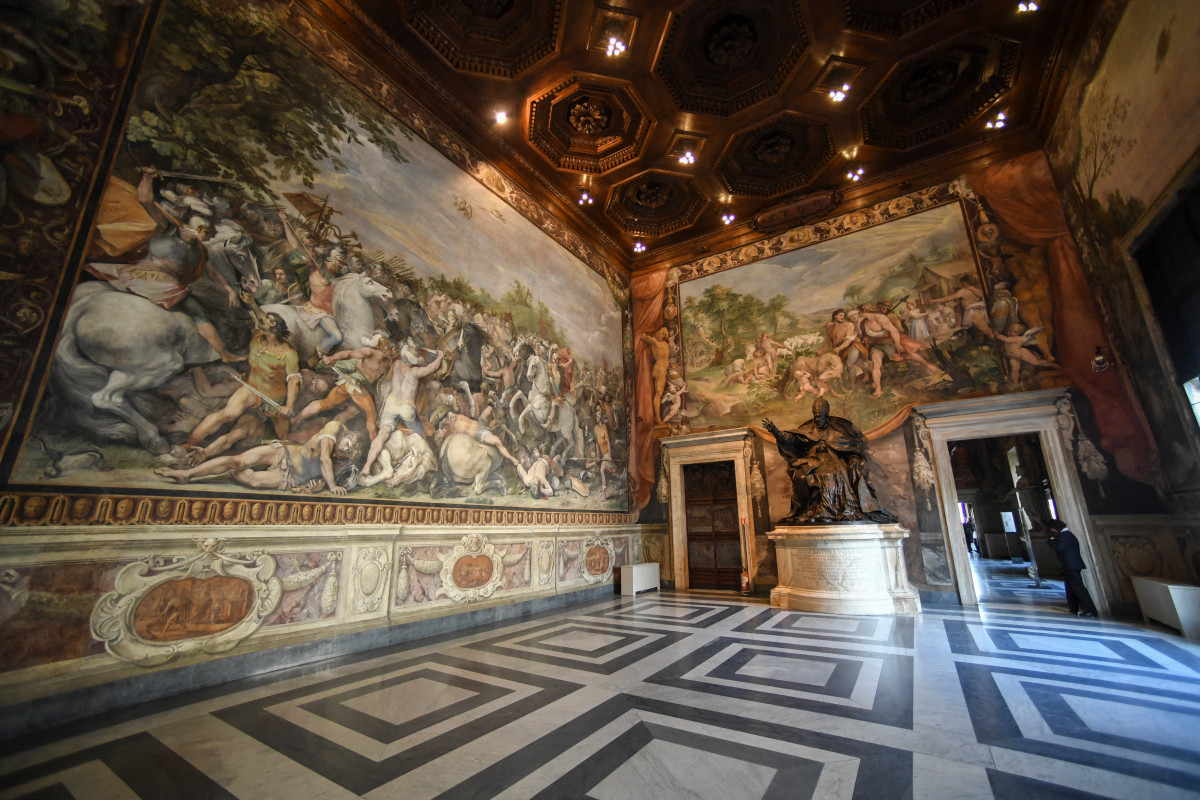15 essential tips to make living in Rome far easier

Rome can be a hard place to settle once the first romance wears off but Jessica Phelan shares her tips for making life in Italy's capital simpler, smoother and more fun. Share yours in the comments section below.
Make friends with the comune's website
The Rome Capitale website is your friend. A long-winded, temperamental and occasionally frustrating friend, to be sure, but one that will ultimately help you out if it can.
The city council is slowly making it possible to do more and more local admin online, from requesting official certificates to paying traffic fines, applying for study grants or enrolling your kids in nursery school.
Find a full list of online services here. You'll need a secure way to login – either a SPID digital identity or an electronic ID card (CIE) – to access them.
Know your district
For administrative purposes Rome is divided into 15 municipi, or municipal districts, each with its own offices and officials.
You'll save yourself time and frustration by making sure that you direct your requests to the right municipio rather than turning up at the central office or writing to a generic address. Find details of each one here and a handy map here.
The same goes for local health authorities (Aziende Sanitarie Locale), of which the city of Rome has three (ASL Roma 1,2,3) – each subdivided into distretti, or districts. Check which one you belong to before trying to enrol in public healthcare or register with a doctor.
Pay for public transport the cashless way
Prior to 2019, the only way to buy a ticket at a metro station was via one of the self-service machines, which didn't take card, nor most bank notes. Finding yourself without change involved a frantic dash to a newsagents, which depending on the day, the time and seemingly the mood of the cashier, might not sell you a ticket either.
Rome has mercifully moved on since those days, and you can now enter the metro simply by swiping a contactless card (or your phone) at the turnstiles.
As of January 2023, the operator says the service has been expanded to all 'surface vehicles' (buses and trams).
Tickets can also be bought via the MooneyGo (formerly myCicero) app. This allows you to buy public transport tickets online, which you can store in the app and activate when you begin your journey. Each ticket can be used for transfers between buses, trams and the metro (when taking the metro, look for a gate with a QR code scanner).
For journeys on local, regional or long-distance trains throughout Italy, use the time- and paper-saving Trenitalia app.
Get on your bike
Cycling is one of the best ways (I think) to get around Rome.

A man rides a bike in Rome's Via dei Fori Imperiali in December 2020. Photo by Vincenzo PINTO / AFP
Not only will you save yourself the pain of waiting for a bus that never comes, you'll discover routes through the city that you'd never learn by taking public transport. And with new bike lanes being added – albeit in fits and starts – it's not even as chaotic as it's made out to be.
OPINION: Why cycling in Rome isn’t as crazy as it sounds
If you don't believe me, test it out for yourself by borrowing one of the red bikes that you can ride by the minute via Lime's rental app. They're even electrically assisted to help you climb the seven hills.
Share a car or scooter
Beyond bicycles, you can also share scooters – the kind you stand on and the kind you drive – as well as cars.
Register with Share Now or Enjoy to borrow a vehicle in Rome. Some services include useful extras such as a fixed rate for Fiumicino airport, full-day rentals or the option to reserve a small van – particularly handy if you need to move.
For mopeds, try Cooltra or GoSharing. All mopeds come with two helmets as standard, and you can park them anywhere within the zones defined on each app.
You'll need a valid driving licence to sign up for any vehicle sharing service, and some will only accept Italian or European permits.
If you don't have the right paperwork, you can still sign up for kick-style electric scooters using Lime, Dott or Helbiz. Just please, for goodness' sake, don't ride them on the pavement.
Go outside the city walls
However you get there, make sure you venture beyond the centro storico.
Many tourists' visits are bounded by Rome's city walls, the limits of the historic centre packed with millennia's worth of monuments. But the city has long outgrown its ancient identity, both literally and metaphorically, and you'll find that the areas fuori le mura – outside the walls – are where Rome feels most like a living, breathing city instead of a museum. (You'll notice rents start to drop too.)
Call me biased because I live there, but east is my favourite direction to explore: start by wandering among the bars and cafés of Pigneto, bask in the multicultural bustle of Tor Pignattara, and make your way into the up-and-coming foodie neighbourhood of Centocelle.
Find your fix of non-Italian food
While Rome doesn't boast the range or quality of global cuisines you can find in some other European capitals, it's one of the most diverse places in Italy – and you can taste the benefits in the form of Chinese, Indian, Bangladeshi, Ethiopian, Korean, Peruvian, Syrian and Mexican food, to list just what I've eaten recently.
Get your bearings with Zero Roma's pick of "ethnic" restaurants, but remember that the best places are often found by word of mouth or following your nose.
If you're looking for non-Italian ingredients, meanwhile, Esquilino Market is the place to shop for a wide range of spices, condiments and fresh produce from all over the world. Nearby Pacific Trading Company and Selli are also well-stocked with everything from udon noodles to Marmite; keep an eye out too for small independent grocers scattered across the city, where you might be surprised to find just what you need.
Hunt for treasures in Romans' castoffs
As an inveterate bargain hunter I have to admit to being a little disappointed with Rome's most famous flea market, Porta Portese – and not just because it involves getting up early on a Sunday. It's worth a visit, but expect to find at least as many stalls selling new curtains and cheap saucepans as those with secondhand goods.

An antiques shop in downtown Rome in February 2013. Photo by FILIPPO MONTEFORTE / AFP
My preferred treasure-hunting grounds are mercatini dell'usato – junk shops where people sell their old stuff at a price agreed with the store, with deep discounts the longer an item goes unsold.
Look for branches in chic neighbourhoods if you're on the hunt for branded clothing and accessories, while the larger ones on the outskirts of town are especially good for furniture and homewares.
Connect to WiFi for free
If you haven't got your internet contract set up yet – or if you ever find yourself low on data – look out for one of the city's dozens of free WiFi hotspots, which will appear in your networks as DigitRoma.
Register by giving a mobile phone number and password.
Join a library
Rome's libraries are great for language learners, who can borrow Italian textbooks and grammar guides without having to splash out on a new one each time they make progress. Once your comprehension is up to it, you can also practice reading Italian books, newspapers and magazines, or listen to the readings and author talks regularly organised in libraries across the city.
Find your nearest library here.
Getting a library card is free and entitles you to borrow any books you like, but you should also consider getting the Bibliocard: it will give you access to libraries' WiFi, as well as discounts on local cultural services from theatre tickets to language lessons. Sign up to the Biblioteche di Roma newsletter when you join to stay informed about the latest offers and events.
Get a MIC card
It's not entirely an exaggeration to say that the reason I rushed to register my residence in Rome was so that I could get a MIC card.

A picture shows fresco paintings in the Hall of the Horatii and Curiatii at the Capitoline Museums in Rome. Photo by Andreas SOLARO / AFP
This little tessera, reserved for people living or studying or Rome, is an astonishingly good deal – so much so that I keep half expecting the council to get rid of it. But until they do, for the price of just €5 a year, you can enjoy unlimited access to a wide range of the city's museums and archaeological sites. You'll also get priority entry to special events and a 10 percent discount in museum bookshops and cafés.
READ ALSO: How to get free access to Rome's museums with the MIC card
Take a (different) tour
Romans seem more willing than most to be tourists in their own city. Go on a guided tour and you'll always find people who live here alongside the visitors – especially if you choose one that doesn't stick to the usual sights.
Since living here I've been on walking tours of film locations in neo-realist cinema, the Fascist monuments of Foro Italico and the street art of Tor Pignattara. Sometimes taking a tour gets you access to sites that are usually off-limits, like Villa Torlonia or the grounds belonging to the Knights of Malta behind the famous keyhole on the Aventine Hill.
Look for tours organised by local cultural associations and delivered in Italian for some of the most interesting topics.
Likewise, get yourself a guidebook that takes you off the beaten path. Two on my shelves are Secret Rome, a great guide to the city's odder attractions; and Roma Negata, a fascinating look at the remnants of Italy's colonial history hiding in plain sight.
Take June 29th off
Every Italian city has its own public holiday in honour of its patron saint, and Rome's is June 29th.
The capital has two patrons: St Peter and St Paul, the apostles martyred in Rome within three years of each other and both said to be buried here. The celebrations include religious ceremonies, a flower show outside the Vatican and a fireworks display over Piazza del Popolo – not to mention a day off work, depending on your employer.
Explore Lazio
The region around Rome is all too often overlooked by tourists in a hurry to get to Tuscan villages or the Amalfi Coast, but as a resident you'll have plenty of time to discover all that Lazio has to offer.
The region stretches from central Italy to the south and boasts hill towns to rival Tuscany's or Umbria's, forests and mountains as rugged as Abruzzo's, and beaches as beautiful as (though significantly less crowded than) Campania's.
Learn some Roman dialect
Romans' choppy, emphatic pronunciation is sometimes looked down on by holders of one of Italy's more typically elegant accents, and the chances are you won't have learned to talk like a local in your Italian classes.
While you'll get by just fine speaking standard Italian, it's useful to grasp the basics of Roman dialect if you want to be sure of understanding what others say to you. Here's our guide to romanesco and the words you'll hear the most.
For some choice Roman expressions, meanwhile, try following Rome Is More on Instagram, which does its best to render some of the city's least translatable idioms into English.
What tips do you have for living in Rome? Please share in the comments section below.
This article was first published in 2021.
Comments (3)
See Also
Make friends with the comune's website
The Rome Capitale website is your friend. A long-winded, temperamental and occasionally frustrating friend, to be sure, but one that will ultimately help you out if it can.
The city council is slowly making it possible to do more and more local admin online, from requesting official certificates to paying traffic fines, applying for study grants or enrolling your kids in nursery school.
Find a full list of online services here. You'll need a secure way to login – either a SPID digital identity or an electronic ID card (CIE) – to access them.
Know your district
For administrative purposes Rome is divided into 15 municipi, or municipal districts, each with its own offices and officials.
You'll save yourself time and frustration by making sure that you direct your requests to the right municipio rather than turning up at the central office or writing to a generic address. Find details of each one here and a handy map here.
The same goes for local health authorities (Aziende Sanitarie Locale), of which the city of Rome has three (ASL Roma 1,2,3) – each subdivided into distretti, or districts. Check which one you belong to before trying to enrol in public healthcare or register with a doctor.
Pay for public transport the cashless way
Prior to 2019, the only way to buy a ticket at a metro station was via one of the self-service machines, which didn't take card, nor most bank notes. Finding yourself without change involved a frantic dash to a newsagents, which depending on the day, the time and seemingly the mood of the cashier, might not sell you a ticket either.
Rome has mercifully moved on since those days, and you can now enter the metro simply by swiping a contactless card (or your phone) at the turnstiles.
As of January 2023, the operator says the service has been expanded to all 'surface vehicles' (buses and trams).
Tickets can also be bought via the MooneyGo (formerly myCicero) app. This allows you to buy public transport tickets online, which you can store in the app and activate when you begin your journey. Each ticket can be used for transfers between buses, trams and the metro (when taking the metro, look for a gate with a QR code scanner).
For journeys on local, regional or long-distance trains throughout Italy, use the time- and paper-saving Trenitalia app.
Get on your bike
Cycling is one of the best ways (I think) to get around Rome.

Not only will you save yourself the pain of waiting for a bus that never comes, you'll discover routes through the city that you'd never learn by taking public transport. And with new bike lanes being added – albeit in fits and starts – it's not even as chaotic as it's made out to be.
OPINION: Why cycling in Rome isn’t as crazy as it sounds
If you don't believe me, test it out for yourself by borrowing one of the red bikes that you can ride by the minute via Lime's rental app. They're even electrically assisted to help you climb the seven hills.
Share a car or scooter
Beyond bicycles, you can also share scooters – the kind you stand on and the kind you drive – as well as cars.
Register with Share Now or Enjoy to borrow a vehicle in Rome. Some services include useful extras such as a fixed rate for Fiumicino airport, full-day rentals or the option to reserve a small van – particularly handy if you need to move.
For mopeds, try Cooltra or GoSharing. All mopeds come with two helmets as standard, and you can park them anywhere within the zones defined on each app.
You'll need a valid driving licence to sign up for any vehicle sharing service, and some will only accept Italian or European permits.
If you don't have the right paperwork, you can still sign up for kick-style electric scooters using Lime, Dott or Helbiz. Just please, for goodness' sake, don't ride them on the pavement.
Go outside the city walls
However you get there, make sure you venture beyond the centro storico.
Many tourists' visits are bounded by Rome's city walls, the limits of the historic centre packed with millennia's worth of monuments. But the city has long outgrown its ancient identity, both literally and metaphorically, and you'll find that the areas fuori le mura – outside the walls – are where Rome feels most like a living, breathing city instead of a museum. (You'll notice rents start to drop too.)
Call me biased because I live there, but east is my favourite direction to explore: start by wandering among the bars and cafés of Pigneto, bask in the multicultural bustle of Tor Pignattara, and make your way into the up-and-coming foodie neighbourhood of Centocelle.
Find your fix of non-Italian food
While Rome doesn't boast the range or quality of global cuisines you can find in some other European capitals, it's one of the most diverse places in Italy – and you can taste the benefits in the form of Chinese, Indian, Bangladeshi, Ethiopian, Korean, Peruvian, Syrian and Mexican food, to list just what I've eaten recently.
Get your bearings with Zero Roma's pick of "ethnic" restaurants, but remember that the best places are often found by word of mouth or following your nose.
If you're looking for non-Italian ingredients, meanwhile, Esquilino Market is the place to shop for a wide range of spices, condiments and fresh produce from all over the world. Nearby Pacific Trading Company and Selli are also well-stocked with everything from udon noodles to Marmite; keep an eye out too for small independent grocers scattered across the city, where you might be surprised to find just what you need.
Hunt for treasures in Romans' castoffs
As an inveterate bargain hunter I have to admit to being a little disappointed with Rome's most famous flea market, Porta Portese – and not just because it involves getting up early on a Sunday. It's worth a visit, but expect to find at least as many stalls selling new curtains and cheap saucepans as those with secondhand goods.

My preferred treasure-hunting grounds are mercatini dell'usato – junk shops where people sell their old stuff at a price agreed with the store, with deep discounts the longer an item goes unsold.
Look for branches in chic neighbourhoods if you're on the hunt for branded clothing and accessories, while the larger ones on the outskirts of town are especially good for furniture and homewares.
Connect to WiFi for free
If you haven't got your internet contract set up yet – or if you ever find yourself low on data – look out for one of the city's dozens of free WiFi hotspots, which will appear in your networks as DigitRoma.
Register by giving a mobile phone number and password.
Join a library
Rome's libraries are great for language learners, who can borrow Italian textbooks and grammar guides without having to splash out on a new one each time they make progress. Once your comprehension is up to it, you can also practice reading Italian books, newspapers and magazines, or listen to the readings and author talks regularly organised in libraries across the city.
Find your nearest library here.
Getting a library card is free and entitles you to borrow any books you like, but you should also consider getting the Bibliocard: it will give you access to libraries' WiFi, as well as discounts on local cultural services from theatre tickets to language lessons. Sign up to the Biblioteche di Roma newsletter when you join to stay informed about the latest offers and events.
Get a MIC card
It's not entirely an exaggeration to say that the reason I rushed to register my residence in Rome was so that I could get a MIC card.

This little tessera, reserved for people living or studying or Rome, is an astonishingly good deal – so much so that I keep half expecting the council to get rid of it. But until they do, for the price of just €5 a year, you can enjoy unlimited access to a wide range of the city's museums and archaeological sites. You'll also get priority entry to special events and a 10 percent discount in museum bookshops and cafés.
READ ALSO: How to get free access to Rome's museums with the MIC card
Take a (different) tour
Romans seem more willing than most to be tourists in their own city. Go on a guided tour and you'll always find people who live here alongside the visitors – especially if you choose one that doesn't stick to the usual sights.
Since living here I've been on walking tours of film locations in neo-realist cinema, the Fascist monuments of Foro Italico and the street art of Tor Pignattara. Sometimes taking a tour gets you access to sites that are usually off-limits, like Villa Torlonia or the grounds belonging to the Knights of Malta behind the famous keyhole on the Aventine Hill.
Look for tours organised by local cultural associations and delivered in Italian for some of the most interesting topics.
Likewise, get yourself a guidebook that takes you off the beaten path. Two on my shelves are Secret Rome, a great guide to the city's odder attractions; and Roma Negata, a fascinating look at the remnants of Italy's colonial history hiding in plain sight.
Take June 29th off
Every Italian city has its own public holiday in honour of its patron saint, and Rome's is June 29th.
The capital has two patrons: St Peter and St Paul, the apostles martyred in Rome within three years of each other and both said to be buried here. The celebrations include religious ceremonies, a flower show outside the Vatican and a fireworks display over Piazza del Popolo – not to mention a day off work, depending on your employer.
Explore Lazio
The region around Rome is all too often overlooked by tourists in a hurry to get to Tuscan villages or the Amalfi Coast, but as a resident you'll have plenty of time to discover all that Lazio has to offer.
The region stretches from central Italy to the south and boasts hill towns to rival Tuscany's or Umbria's, forests and mountains as rugged as Abruzzo's, and beaches as beautiful as (though significantly less crowded than) Campania's.
Learn some Roman dialect
Romans' choppy, emphatic pronunciation is sometimes looked down on by holders of one of Italy's more typically elegant accents, and the chances are you won't have learned to talk like a local in your Italian classes.
While you'll get by just fine speaking standard Italian, it's useful to grasp the basics of Roman dialect if you want to be sure of understanding what others say to you. Here's our guide to romanesco and the words you'll hear the most.
For some choice Roman expressions, meanwhile, try following Rome Is More on Instagram, which does its best to render some of the city's least translatable idioms into English.
What tips do you have for living in Rome? Please share in the comments section below.
This article was first published in 2021.
Join the conversation in our comments section below. Share your own views and experience and if you have a question or suggestion for our journalists then email us at [email protected].
Please keep comments civil, constructive and on topic – and make sure to read our terms of use before getting involved.
Please log in here to leave a comment.